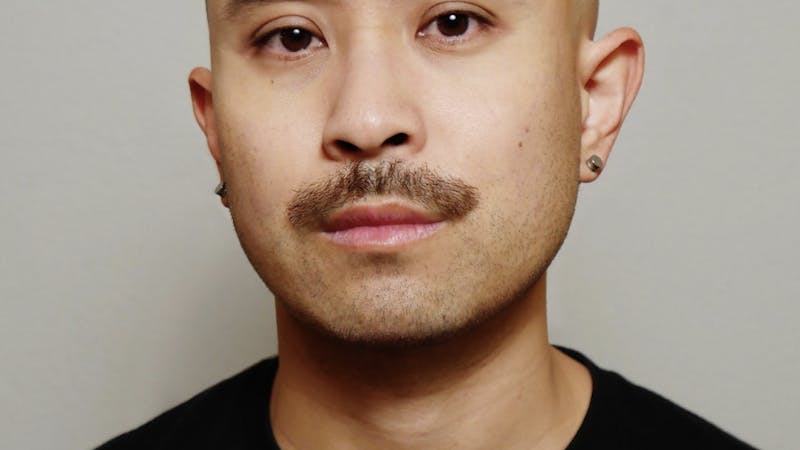Student air purifiers at work on the METRO
Five Rice seniors are cleaning up the air on METRO buses with the product of their senior design project. Joseph Spinella (Brown '12), Jerry Lue (Brown '12), Sundeep Mandava (Brown '12), Shidong Chen (Brown '12) and Grace Ching (Duncan '12) created FluProof, a system that rids the air on public transportation of harmful pathogens that could cause tuberculosis, influenza and pneumonia.
The team started looking for ways to purify air on METRO buses after their project mentor Marsha Feske, a researcher for Methodist Hospital, found a correlation between the spread of tuberculosis and Houston METRO buses, Spinella said.
"From an engineering perspective, we had two big problems to solve - finding an effective air sterilization method and finding a way to make that method work on a moving bus with a 12-volt battery," Spinella said.
After looking into several methods of air sterilization such as electrostatic filters, high-efficiency particulate arresting filters, photocatalytic oxidation and ionization, the group ultimately decided to use ultraviolet germicidial irradiation, Spinella said. The UVGI method is currently used in surgical rooms and office buildings, Spinella added.
"UVGI works by emitting high-energy, ultraviolet-C-band light, which is powerful enough to cause bacteria's DNA to disassemble, making it impossible for the bacteria to reproduce," Spinella said. "There is no filter that gets clogged and needs to be replaced and no reduction in the airflow."
The FluProof device does contain some differences from the usual air-purifying technology. It consists of a lamp installed in each overhead air duct on the bus, through which air passes to be sterilized, rather than a lamp in the evaporator coils in the back of the bus, Spinella noted.
"This increases accessibility and allows for passengers to see the lamps operating through a viewing window," Spinella said.
Additionally, the team put UV-reflective aluminum in the air ducts, which Spinella said increases the lamp's light intensity. Another difference from other technology is that FluProof is operated by a power-efficient microcontroller, Spinella said.
FluProof's design also includes a vibrational damper, which protects the system again possible damage due to uneven roads, according to a schematic provided by Chen.
The team conducted tests and compared bacteria found in buses with and without FluProof, Spinella said.
"With FluProof, we found zero colonies, while the bus without FluProof had twice the amount of bacteria compared to outside air," Spinella said.
FluProof also has great potential for places where public transport is more widely used and more harmful bacteria are prevalent, Chen said.
"The potential impact this could have in developing countries is what drew me to this projet," Chen said.
Spinella said that FluProof is not only effective in killing germs, but also cost-effective.
"The parts only cost $500 per bus, which is about equivalent to one tank of gas," Spinella said.
The team plans expand FluProof to all Houston METRO buses and some Houston school buses.
"The research is there; the solution is there - all we need is the capital to install [it] on Houston's more than 1,000 METRO buses," Spinella said.
According to Andrew Skabowski, Houston METRO's senior vice president for service delivery, Feske approached him about letting Rice students look for a way to purify air on buses for a senior design project, and he agreed.
"If there's anything I can do to improve the environment and air quality on the buses, I'm going to do it," Skabowski said.
FluProof is currently on two METRO buses as part of the test for the senior design project, but it is not yet on the market. Skabowski said once FluProof is on the market, if it is cost effective and there are available funds, METRO would be interested in putting it on more buses.
"Anything that's fiscally reliable and will show traceable benefit, METRO will support it," Skabowski said.
Furthermore, the group benefitted from being able to test their prototype on actual buses.
"It has been really exciting that METRO has been so supportive and let us test our project on a real bus environment," Chen said.
Spinella said he enjoyed working with METRO on this project.
"It was amazing to learn what real engineering looks like on the shop floor and to practically install our device on two METRO buses," Spinella said. "Most of the employees there have worked for more than 20 years and have all sorts of experiences working on buses. They knew a good design from a bad one and were able to give us honest feedback about our solutions."
Spinella added that he is looking forward to the future of FluProof.
"I am thrilled that the public is excited about this project, and I hope that this idea can move forward to keep people across America safe when they ride on buses and other transit vehicles," Spinella said.
More from The Rice Thresher

Andrew Thomas Huang puts visuals and identity to song
Houston is welcoming the Grammy-nominated figure behind the music videos of Björk and FKA twigs on June 27.

Live it up this summer with these Houston shows
Staying in Houston this summer and wondering how to make the most of your time? Fortunately, you're in luck, there's no shortage of amazing shows and performances happening around the city. From live music to ballet and everything in between, here are some events coming up this month and next!

Review: 'Adults' couldn’t have matured better
Sitcoms are back, and they’re actually funny. FX’s “Adults” is an original comedy following a friend group navigating New York and what it means to be an “actual adult.” From ever-mounting medical bills to chaotic dinner parties, the group attempts to tackle this new stage of life together, only to be met with varying levels of success.

Please note All comments are eligible for publication by The Rice Thresher.